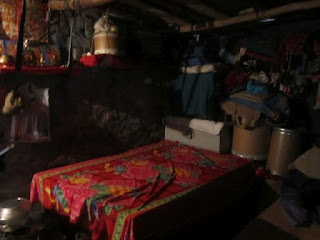Square foot for square foot your maid’s rent is probably higher then yours. The rents for shanties and jhuggies across the capital have hit the roof. People are paying 30 rs a square foot for flimsy tenements not larger than 10 square feet with no bathroom, kitchen or running water. This fact was revealed in a study by the the School of Planning and Architecture’s (SPA) National Resource Centre.
We have experienced first hand the skyrocketing of rents over the past decade. Ten years ago you could still find a shanty for 500 rupees a month. Today the same space is nothing less than 2000 Rs. And migrants have no option but to rent such jhuggis are rooms in any part of the capital is nothing less than 5000 Rs a month. A poky, windowless room with an apology of a bathroom goes for 5K in the Govindpuri lane where we are located. And Madanpur Khader village that till recently had rooms @ 1000 a month and provided shelter to migrants is undergoing a mutation. With medical tourism at its height and Apollo Hospital a stone’s throw away, landlords are evicting their poorer tenants, knocking off the old structures and erecting swanky guest houses and service flats for the relatives of long term patients. It is a roaring business with many takers. The erstwhile tenants are now running helter skelter to find alternative accommodation in a city that has none.
We may turn up our noses in disdain and even disgust while passing through a shanty town. We may feel that such aberrations have no place in a city like ours. But have we ever stopped to think as to why this has occurred? And above all do we realise the strong link that binds us to the inhabitants of these shanties. But let us begin with the first statement: how and why have we reached this situation. Have you ever wondered if our city has adequate provisions for housing its poor? Big cities normally have poorer quarters with high rises. We have zilch. Many years back private houses had the ubiquitous servant quarter that were meant to house those working within the premises as well as their family. So your maid husband could be an plumber, electrician, carpenter or simply an employee in a shop. Then slowly the concept of large well constructed servant quarters was transformed as people redid their houses taking in the servant quarter space to make a new flat that could be rented. The servants were relegated to tiny rooms on the roof often with just an asbestos sheet to ward the heat or cold. The room was barely sufficient for one person.
When migrants came to Delhi many many decades ago they looked for space to live. They often found some vacant space and erected bamboo poles and a plastic sheet begin with. They knew the space was illegal and so did the authorities. But the later did not evict them as they saw a way of lining their pockets. The poor migrant had no option but to pay. When the numbers grew the political parties started looking at them as potential vote banks they needed to woo. They were given an identity in the form of a voter’s card and soon became legal! This game carried on. The migrants felt emboldened and the flimsy structures were soon replaced by more concrete ones and then just as the rich did, they too decided to become landlords: roms were built on top of the one they lived in and rented to newcomers. This happened in every slum in the city from the larger ones and even the legal rehabilitation colonies to the tiny ones that often sprung up on small pieces of empty land across the city. These are the rooms that now fetch a hefty rent.
These places house the people who are the backbone of the city and as I said earlier people who are closely linked to us. The ones who carry out repairs or even build our homes, the ones who look after our every day needs and care for our very own, the ones who make our lives a tad easier. Have we ever stopped to think about where our maid or our plumber lives? I think we should.
The shanties and hovels a large part of the city live in are homes to those who stay in them. I have been always impressed by the care taken in setting them up: the kitchen corner with shelves lined with gleaming utensils, the sole bed that always dons a bright cover, the school bags of the children that hang neatly in another corner and so on. The space is squeaky clean. I have visited many such homes and been warmly welcomed each and every time with smiles and warm cups of delicious tea.
But these living conditions are abysmal and appalling. Any city that expects any of its inhabitants to live in such conditions should hand its head in shame. The surroundings are dirty and often dangerous. Many such homes are build next to factories and often lower than the roads. Many factories discharge their chemical in the open drains where children often play.
It is time something was done for these people and time for the city to embrace its own with the dignity they deserve. But for that the Government would have to build proper housing. I do not think that is about to happen if we are to believe today’s headlines: Government plans to sell surplus land to ease fiscal crunch!


